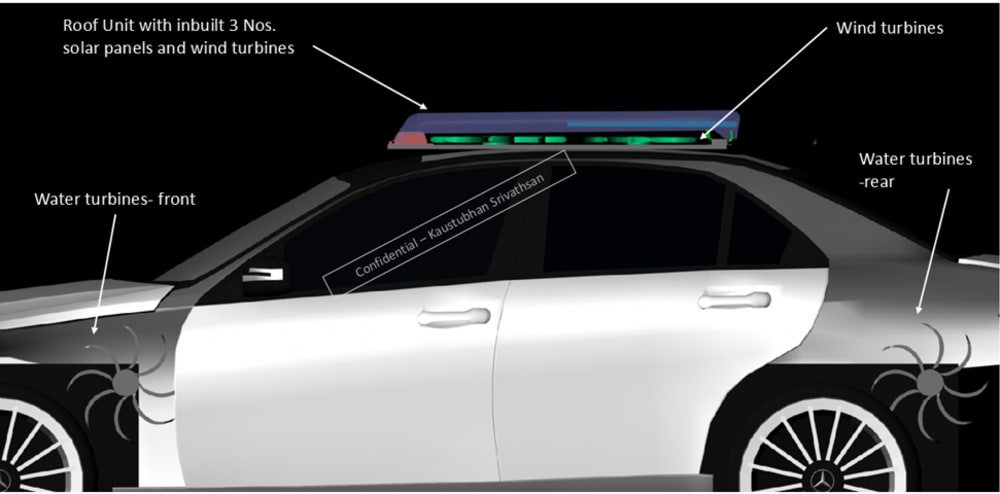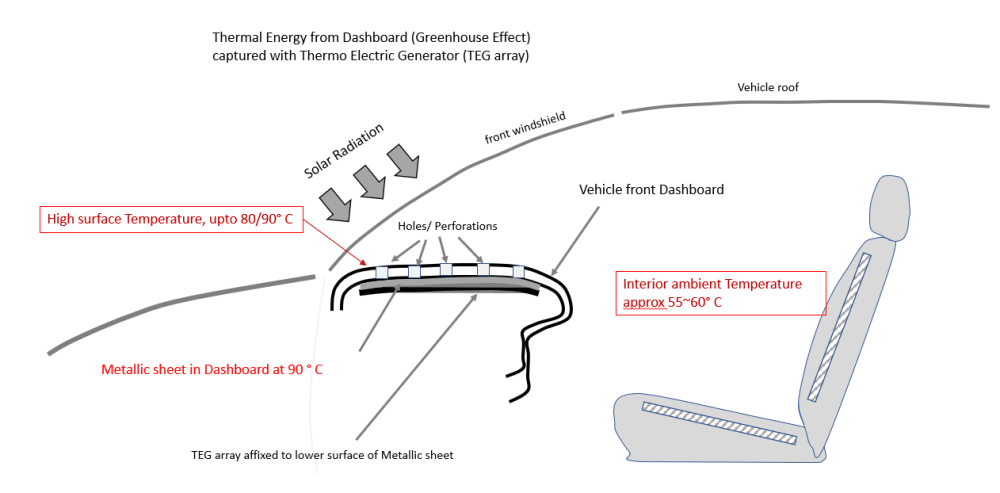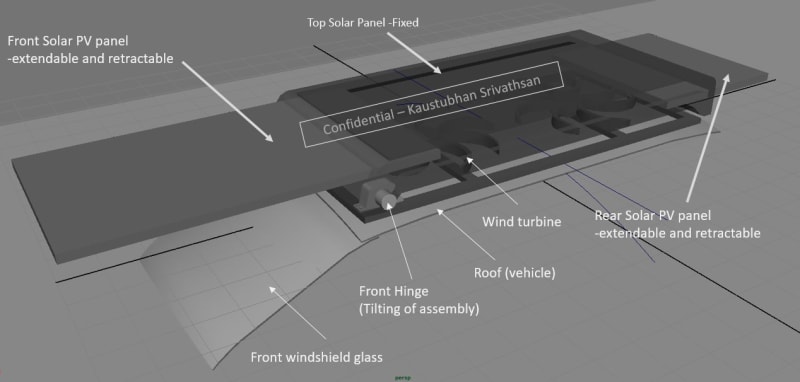Market penetration of Battery Electric Vehicles is still very low (~3 to 4% in India, ~ 8% in the US). Factors responsible include resistance arising from a fear of unavailability of charging stations in long trips or charging station not working properly. Also, charging grid electricity is most often obtained from coal and fossil fuel plants, this negates the very purpose of Net Zero Targets for environmental sustainability. In parallel, ICE vehicle manufacturers also need to meet country specific CAFÉ-3 norms that are stringent and involve payment of heavy penalties for non-conformance. The only way forward is to increase the percentage of BEV sales, which means to increase customer acceptance dramatically. My solution is to generate charging energy onboard the vehicle. Multiple Renewable Energies harnessing technologies are converted, integrated and outputs synthesized via a controller into a coherent single DC current output which charges a BEV’s Traction Battery.
A roof-mounted flexible Solar PV panels assembly system having a top panel fixed and always exposed to solar radiation, two sub-panels are extendable and retractable in forward/rearward direction, capturing additional solar radiation when vehicle is parked under the sun. 300% or more increase in solar energy capture as a result (compared to prior art solar cars having a single PV panel on roof). Extended panels also keep the interiors cool, saving Air conditioning energy.
Thermal energy captured from hot dashboard (Greenhouse Effect) using Thermoelectric Generator (TEG array) combined with metallic plate in dashboard, works both when vehicle stationary or running.
Thermal energy captured from Brakes system using TEG array designed with a special Calliper that leverages ∆T between hot Disc and ambient. (separate from the Brake Callipers). Works when vehicle stationary.
Thermal energy captured from hot road surface with TEG array sandwiched within the underbody panels, leverages ∆T between hot road surface and vehicle interior. Works both when vehicle stationary or running.
Wind energy captured from high crosswinds or during rain works when vehicle is running or stationary, using Vertical Axis Wind Turbines, packaged below solar panel assembly. Works both when vehicle stationary or running.
Hydraulic energy captured during rainy season and car washing. The Roof Solar panel Assembly doubles up as rainwater collector, when vehicle is stationary. When tilted, it increases water flow velocity downwards under hood into cowl, which doubles up as a water tank. When full, water is released into a Horizontal Axis water turbine below, which works on low Head, Low velocity. The tank continues to fill again.
Kinetic energy is captured from tyres when vehicle is running, leveraging the deformation of the tyre sidewalls, using TENG array (Tribo Electric Nano Generator).
Bio-Kinetic energy created by vehicle occupants is captured when vehicle is running, such as when jouncing, using TENG arrays embedded in seat cushion.
Total Electrical Energy calculated for a mini car (of 15KWhr battery capacity) : 73KWhr per week possibility. A self-powered car working on renewable energy becomes possible.
Like this entry?
-
About the Entrant
- Name:Kaustubhan Srivathsan
- Type of entry:individual
- Software used for this entry:Autodesk








